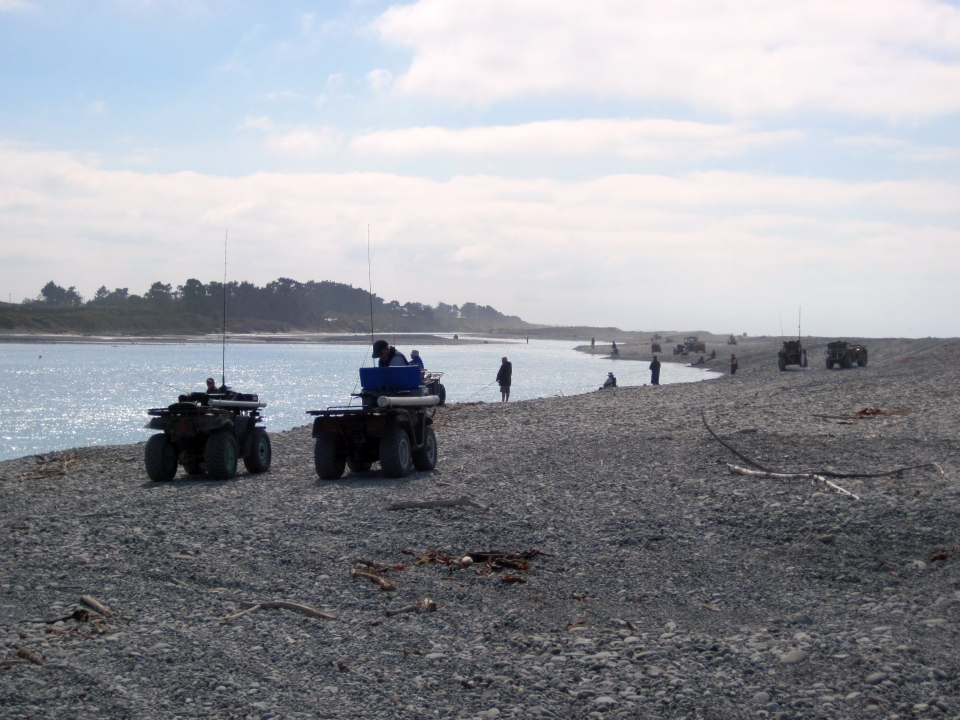Economic benefits
Agriculture is a key part of our economy. It benefits communities all over New Zealand.

Agriculture employs more than 110,000 people. There are also many people employed in other areas related to agriculture.
Irrigation allows for a wider range of crops. This benefits other businesses that use this produce.
Irrigation improves the quality of produce. It also helps maintain a steady supply of produce. Irrigated farms can supply food even if there is a drought. These are benefits to both the grower and consumer.
- Watch this video about how important irrigation is in the developing world and in drier climates - https://www.youtube.com/watch?v=JJBpeVDAR5w
Environment
How a reliable water supply helps
Efficient irrigation needs on-demand water – much the same as a town’s water supply. This allows irrigators to apply water when a crop needs it, while maximising rainfall. This irrigation strategy reduces the amount of water a farmer will need to take.
How and when water is applied needs to be carefully managed by farmers. For example, if soil becomes very dry topsoil it can be prone to erosion. This is bad for the environment because soil, and often fertiliser, ends up in our rivers. Irrigation helps keep soil moist so it stays in place. But if there is too much irrigation or rainfall, fertilisers can end up in rivers or groundwater.
Farms leach less fertiliser into groundwater when irrigators apply water at the right time. Irrigated land also produces around twice the amount of crops than non-irrigated land. So when we think about the environmental impacts of using irrigation, we need to also think about the impacts of using twice the amount of land to grow the same amount of food. These impacts include things like how much fuel it would take to farm that land and how much fertiliser it would need.
Helping rivers
Taking too much water from rivers can mean there isn’t enough water to support fish and ecosystems. In New Zealand rules are in place to manage this. Councils set minimum flow levels for rivers. If river levels get low then irrigators and other water users must stop using water.
Some modern irrigation schemes have solved river and stream flow issues. The design of the Opuha Dam in South Canterbury means the Opihi River does not run dry. The Opihi is now one of the best recreational fishing grounds in New Zealand. The dam can release water into the river like a natural flood. This helps stop the build-up of algae in the river during summer.
Central Plains Water in Selwyn is another example. Its design replaces groundwater takes with alpine river water. This is helpful as there is more demand for groundwater than there is groundwater available in Selwyn district. Some rivers like the Selwyn River are also fed by groundwater. So improving groundwater levels will help these rivers to flow more often.
Environmental grants and scholarships are available through a growing number of irrigation schemes. Communities use these grants to restore native vegetation and improve local rivers.
Community
Many New Zealand towns and cities benefit from irrigation development. Greater agricultural production means more people and jobs in rural communities. School rolls in these rural areas are also increasing. More people in a community allows funding of more public facilities.
Some towns also have their drinking water supplied from irrigation schemes. Timaru, Oamaru and Kerikeri are some examples of this.

Other benefits that irrigation schemes can provide communities include:
- stock water
- water for rural firefighting purposes.
Recreation
Many popular waterways have been changed to help farming and energy production. Irrigation system designs are now also including recreational interests.

- Ready for a quiz? Try the An Asset for New Zealand activity.








